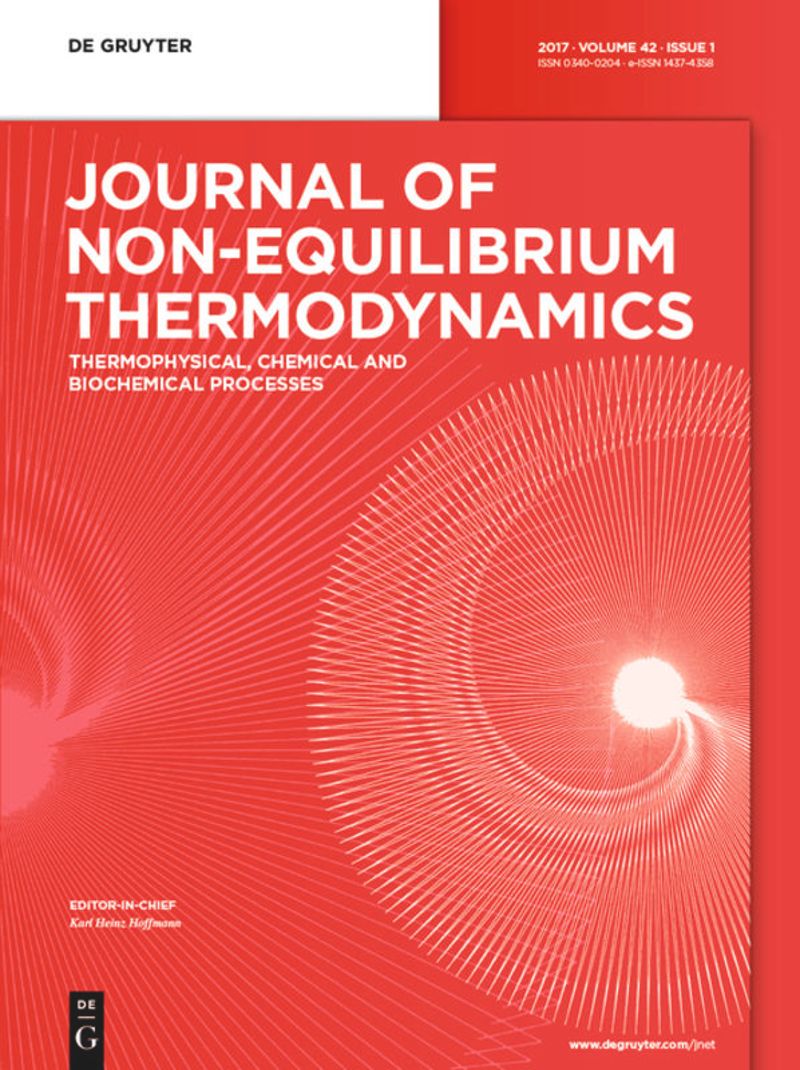Numerical and optimization analysis of natural convection and entropy-generation in wavy triangular cavity with Casson fluid under magnetohydrodynamics and radiation
IF 4.2
3区 工程技术
Q1 MECHANICS
引用次数: 0
Abstract
Enclosure design is essential for thermal engineering technology and applications, including electronics, heat transfer equipment, power reactors, cooling mechanisms, solar energy systems, and nuclear power plants. This study aims to analyze the numerical and Response Surface Methodology (RSM) optimization for natural convection and entropy generation in a wavy triangular cavity with Casson fluid under inclined magnetohydrodynamic and radiation influences. The finite element approach (FEM) is utilized to compute the numerical solution for the simulation framework, while RSM is applied to determine the optimal heat transfer rate among four different parameters. The study presents streamlines, velocity profiles, isothermal lines, total entropy generation, and average Nusselt number in graphically and tabularly. The results show that an increase in the number of undulations and the Casson parameter leads to an increase in the thermal transfer rate and total entropy generation, whereas the Hartmann number has a decreasing effect on both. The Nusselt number rises with the rising number of undulations and the radiation parameter. The peak stream function is observed at an inclination angle of 60°. The significant磁流体力学和辐射作用下卡森流体在波浪三角形空腔内自然对流和熵生成的数值与优化分析
外壳设计对于热工技术和应用至关重要,包括电子、传热设备、动力反应堆、冷却机制、太阳能系统和核电站。本研究旨在分析在倾斜磁流体力学和辐射影响下,卡森流体在波浪状三角形空腔中自然对流和熵生成的数值和响应面方法优化。采用有限元法计算了模拟框架的数值解,采用RSM法确定了四种不同参数下的最优换热率。该研究以图形和表格的形式展示了流线、速度剖面、等温线、总熵生成和平均努塞尔数。结果表明,波动数和Casson参数的增加导致换热速率和总熵生成的增加,而Hartmann数对两者的影响均减小。努塞尔数随波动数和辐射参数的增加而增加。在倾角为60°时观察到峰值流函数。R 2的显著值为0.9967,表明期望值与实际值吻合良好。
本文章由计算机程序翻译,如有差异,请以英文原文为准。
求助全文
约1分钟内获得全文
求助全文
来源期刊
CiteScore
9.10
自引率
18.20%
发文量
31
审稿时长
1 months
期刊介绍:
The Journal of Non-Equilibrium Thermodynamics serves as an international publication organ for new ideas, insights and results on non-equilibrium phenomena in science, engineering and related natural systems. The central aim of the journal is to provide a bridge between science and engineering and to promote scientific exchange on a) newly observed non-equilibrium phenomena, b) analytic or numeric modeling for their interpretation, c) vanguard methods to describe non-equilibrium phenomena.
Contributions should – among others – present novel approaches to analyzing, modeling and optimizing processes of engineering relevance such as transport processes of mass, momentum and energy, separation of fluid phases, reproduction of living cells, or energy conversion. The journal is particularly interested in contributions which add to the basic understanding of non-equilibrium phenomena in science and engineering, with systems of interest ranging from the macro- to the nano-level.
The Journal of Non-Equilibrium Thermodynamics has recently expanded its scope to place new emphasis on theoretical and experimental investigations of non-equilibrium phenomena in thermophysical, chemical, biochemical and abstract model systems of engineering relevance. We are therefore pleased to invite submissions which present newly observed non-equilibrium phenomena, analytic or fuzzy models for their interpretation, or new methods for their description.

 求助内容:
求助内容: 应助结果提醒方式:
应助结果提醒方式:


